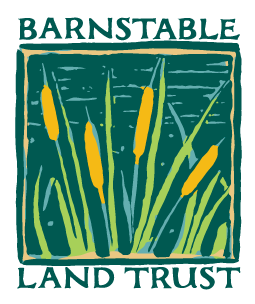Marine Mollusks on Cape Cod
From a sandy beach to a salt marsh, the remains of one of the largest invertebrate groups can be found. The Mollusca is only second to the insects in number of species. The two main groups are the bivalves (clams) and the gastropods (snails). Both groups have a mantle which forms the outside shell made of calcium carbonate. The shell grows larger as the animal increases in size. The body of the animal is soft and unsegmented.
The clam shell consists of two halves or valves which are attached by a hinge. These animals are filter feeders taking in water through a siphon and trapping and selecting small food particles. The snails have a single shell and feed by scraping their food with a radula. Some snails are herbivores while others are carnivores.
There are two common species of mussels. The blue mussel (Mytilus edulis) can be found on intertidal rocks and jetties. Bluish-black in color, this animal grows over three inches. It is attached to its substrate with strong byssal threads. This is the edible species and it is consumed by many predators ranging from sea stars to eider ducks.
The ribbed mussel (Modiolus demissus) is more likely found on the banks of salt marshes. These clams have shells with ridges or ribs along the length, hence their name. Both species of mussels are filter-feeders, using their siphons to strain water for bits of organic material such as microscopic algae. They are often covered by a canopy of rockweed (Fucus vesiculosus) which provides the animals with protection from predators and desiccation at low tide.
Soft-shelled clams (Mya arenaria) have a chalky white shell and are three to six inches long. These animals are commercially important and are often called steamers. They live in muddy intertidal areas and are characterized by a strong foot that anchors the animal, and a large siphon for filtering food.
Razor clams (Ensis directus) are also found in mudflats. These mollusks burrow under the surface, but they use their strong foot to dig very quickly into the substrate. The shell is about five times longer than it is wide, and brown along the edges.
Another clam with a chalky white shell is one of the largest bivalves called the surf clam (Spisula solidissima). This shell can be up to eight inches in length. The animal is found in deeper water down to one hundred feet. They often wash up on the beaches after a major storm.
Another subtidal species that is economically important is the bay scallop (Aequipecten irradians). These bivalves do not burrow in the sand but move by snapping their two shells together. They are found in eelgrass habitats, and grow up to three inches long.
A very productive and commercially important bivalve is the oyster (Crassostrea virginica). An oyster can spawn several times a summer and in the process release millions of eggs. After fertilization the young larvae, known as spat, settle on a hard substrate where they remain for the rest of their lives. Oysters are often found in large clumps next to others because the old shells in an oyster bed are suitable places to attach. There are many predators of oysters including the small, but highly efficient oyster drill (Urosalopinx cinera) which can cut a small hole in the oyster and feed on the animal.
There are several common gastropods or snails found on Cape beaches. The largest is the channeled whelk (Busycon canaliculatum) which can grow as big as seven to nine inches. These are carnivorous animals and feed on various bivalves by using their shell to break open the clams for feeding. You can often find their long brown egg capsules in which each parchment has over a dozen young whelks. A similar species is the knobbed whelk (Busycon carica) which has the bumps or knobs on the outer shell.
Moon snails (Polinices duplicatus) are also carnivorous and do a great deal of damage to a clam or oyster bed. They have a large foot for burying in the sand where they also leave conspicuous trails that can be seen at low tide. Sometimes you can find their egg masses in a circular sandy structure called a sand collar.
The slipper snail or boat snail (Crepidula fornicata) is very common in this area, particularly along sandy beaches. Sometimes large numbers of slipper snail shells wash up. They also can be found in large heaps attached to each other. The larger ones on top are female whereas the smaller animals underneath are males. The shell is identified by an indentation or platform along its opening.
In terms of numbers the slipper snail’s rival is the periwinkle (Littorina littorea). These small snails grow up to one and a half inches long. They are found in the intertidal zone as well as on jetties and groins. They are characterized by a radula for grazing small plankton and algae, and a strong foot for moving. They can be seen leaving long tracts in the sand.
Even before the weather warms up many of these shells can be found on our local beaches in Barnstable. And they make a great collection for kids learning about the marine environment. It also reminds us of how important some of our local food sources are.




